TOKYO: The 4-day tour
- chuckmeltzer
- Jun 4
- 8 min read
Updated: Jul 23
We then traveled to Tokyo via bullet train for the final four days of our Intro to Asia tour. We checked into The Okura Tokyo, a stunning hotel rebuilt in 2019, situated across from the US Embassy. After experiencing subpar accommodations (in my opinion) with National Geographic, we finally enjoyed a lovely, spacious, and elegant corner room on the 29th floor with a view of Tokyo. I was quite satisfied and didn't feel the need to request a third room, as I sometimes do.
In Tokyo, we chose Context to book our tours. We appreciate both ToursByLocals and Context, and our choice usually depends on what each company offers for the destination we're visiting. Additionally, I find it optimal to stick with one company per location, though there is room for flexibility. Context typically features guides with a slightly higher academic background. On our first day, we spent the entire day with Angel, an aspiring PhD candidate from Spain, who is studying the impact of Shintoism and Buddhism on the development of Japanese culture.
We started our day in the Yanesen area, a part of Tokyo that remained untouched by wartime conflict. We strolled through about six blocks of stores in an arcade that led to Senso-ji, Tokyo’s oldest established Buddhist temple, dating back to 628 AD. It has been reconstructed several times over the centuries, including after the Tokyo firebombing in 1945. The temple is dedicated to Kannon, the bodhisattva of compassion.
Japan is a very clean place and it is part of their culture to keep it that way.
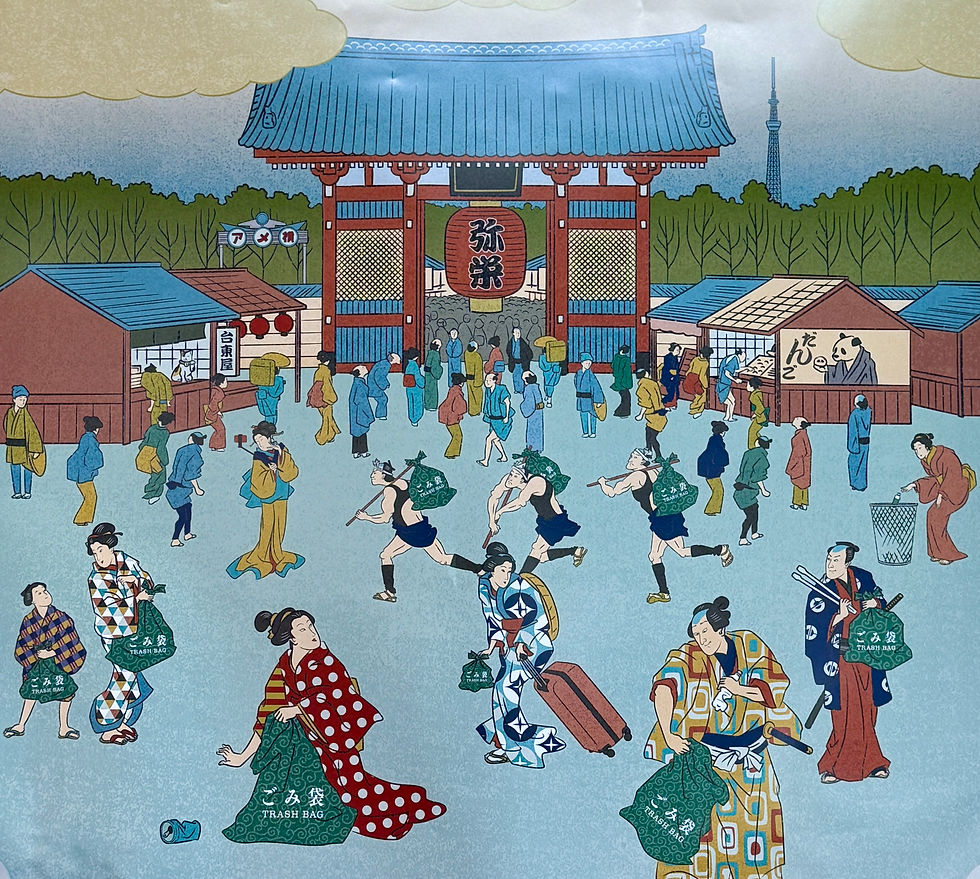
There were still more shrines to visit. Next up was the Ueno Toshogu Shrine.
Ueno Park hosts a variety of Tokyo's museums and cultural centers. It also features a stunning azalea garden that was just beginning to bloom and a path lined with numerous torii gates.
While exploring Tokyo, we encountered a variety of random sites. Previously, Starbucks was a familiar presence wherever you went, and now, in our interconnected world, Uber is too. Additionally, there are pictures of the central train station included below.
To understand Japan, it is essential to acknowledge the values instilled by Shintoism and Buddhism over the centuries, along with the external influences on the Japanese population.
On our second day in Tokyo, we decided to explore beyond the city by visiting Kamakura, a coastal town an hour to the south. Our guide, Fabien, a French expatriate, took us on this journey. Kamakura is a charming town, renowned for its remarkable 13.35-meter-tall bronze Buddha at Kotoku-in, which was constructed in 1252.
We continued to the Hase Temple (also known as Hasedera), founded in 721 AD. This is another Buddhist temple featuring beautiful gardens and an eleven-headed Bodhisattva (photography is not permitted). Scattered throughout the gardens are hundreds of mini-Buddha statues. These small statues serve as a way to contribute to the larger temple and assist in the journey towards enlightenment.
That evening, we dined in the Ginza area of Tokyo. We had pasta at a bustling Italian restaurant called The Kitchen Salvatore Cuomo Ginza. The food was decent, but the service left much to be desired. We experienced a long wait for our meal, and they played loud heavy metal rock music. I had to use Google Translate to communicate our dissatisfaction with our waiter. It was a bit of a misstep, but at least it wasn't more raw fish and soy sauce. A couple of evenings earlier, we had enjoyed a much better dining experience at another Italian restaurant, Rigolletto Wine and Bar, which we would recommend.
Ginza features all the major stores, as expected, but beyond the big city glamour, you’ll notice how clean the streets are and the absence of honking. We traveled all over town using the subways, which are equally spotless, and everyone is very polite. No one talks on a cell phone or eats on the train.
I particularly loved the sign below instructing people not to try to retrieve anything that might have fallen onto a track.
Moving along, on our next day, we walked over to the National Art Gallery.
At the gallery, we had the pleasure of being guided by Rafa, the most organized and exceptional guide we’ve ever encountered. Rafa, a Sephardic Jew and a PhD in architecture, began by sitting down with us to provide a brief lecture on Japanese culture before we explored the museum galleries. He aimed to deepen our understanding of how the traditional art in the museum was influenced by history and culture. The extensive collection features numerous objects, sculptures, and paintings, including samurai swords and kimonos.
These paintings are distinctive because an object, such as a branch, might be only partially shown on the canvas. Furthermore, the artists choose to leave sections of the canvas unpainted instead of filling every space.
Below are samurai warrior outfits; can we say Darth Vader?
I particularly liked the netsuke, which are small carved collectibles.
Our guide, Rafa, encouraged us to view Japan as a bowl of rice. While rice alone is uniform, considering what contributes to this bowl of rice makes it far more intriguing. The elements of this bowl begin with the individuals who introduced Buddhism to Japan from China and India. It includes those who traded from the Netherlands and France, and finally, the influence of World War II, when the US occupied Japan for several subsequent years.
Shinto existed in some form from around 400 BC until Buddhism arrived in Japan in 600 AD. Shinto focuses on life, whereas Buddhism centers on death. Shinto features shrines with torii (gates) and priests, while Buddhism has temples and monks. Approaching a Shinto shrine involves a winding path, while a Buddhist temple is approached in a straight line.
Wabi-sabi is a Japanese philosophy that appreciates beauty in imperfection, transience, and the natural flow of life. It encourages accepting flaws and focusing on the simple, rustic, and authentic, often finding beauty in what is overlooked or discarded. In life, it promotes humility and gratitude for what is, rather than striving for more. This perspective does not drive potential overachievers to exceed the status quo. In nature, wabi-sabi explains the beauty of landscapes that are more natural than a formal French garden. In art and design, wabi-sabi is evident in pottery, where imperfections are cherished. It promotes natural, simple, and raw aesthetics.
The governance of Japan significantly influenced its culture, particularly during the Edo (1603-1868) and Meiji (1868-1912) periods. The Edo era was defined by isolationist policies, a strict social hierarchy, and economic growth within a feudal system. Although Kyoto was the capital from 794-1869, the Tokugawa shogunate operated from Edo Castle in Tokyo, which later became the capital during the Meiji Restoration. This restoration marked the end of the Edo period and began a phase of rapid modernization, including the adoption of Western technology, the establishment of a constitutional monarchy, and military expansion.
In the Edo period, the Tokugawa enforced a strict social hierarchy, with the emperor as a symbolic figurehead and the shogun as the ultimate military leader. Society was rigidly structured, with the samurai (warrior class), peasants, artisans, and merchants occupying various levels. Japan pursued a policy of national isolation, limiting foreign trade and travel.
Commodore Perry was instrumental in ending Japan’s long period of isolation. In the 1850s, he led an expedition that compelled Japan to open its ports to trade and diplomatic relations with the West. Perry arrived in Tokyo Bay with a fleet of technologically advanced black ships. His approach, known as “gunboat diplomacy,” used military force as a negotiation tool, effectively achieving his goals. Perry’s actions led to Japan’s modernization and global engagement, and it’s speculated that these events influenced Japan’s later military campaigns in China, Malaysia, and eventually Pearl Harbor.
The Meiji period marked the end of the shogunate. Japan’s openness to Western trade and influence led to significant social, political, and economic transformations. The Meiji government heavily invested in military modernization. The young samurai who led the rebellion against the Tokugawa shogunate were concerned about foreign encroachment and feared Japan might face the same imperialist pressures affecting China. They aimed to revise unequal treaties with foreign nations, adopting a strategy to enrich the country and strengthen the military to stand equal with Western powers. The Meiji period concluded with Emperor Meiji’s death in 1912.
Regarding the attack on Pearl Harbor, historians suggest it was provoked by embargoes in 1940-41 on scrap metals and petroleum products crucial for Japan’s war efforts. Some revisionist historians even propose that Roosevelt deliberately provoked Japan to prompt the US to declare war and support allies in Europe. The truth of this speculation remains uncertain.
Now, moving on to contemporary Japan, its aesthetics and architecture were the focus of our last tour in Tokyo. Our guide was Jay, who holds a master’s degree in urban planning from the University of Tokyo and is an ex-pat from the US. Before settling in Japan 25 years ago, Jay spent time in Syria, Russia, and the UK. The quality of the Context guides continues to impress me.
We met up with Jay in the Harajuku district, famous for its cutting-edge fashion retail. As an urban planner, Jay emphasized that there aren't many regulations concerning preservation or architectural design. There are some height limitations, but if you own the land, you have significant freedom in what you can do.
We also had the chance to visit another large torii at the Meiji Shrine, dedicated to Emperor Meiji. The original shrine was destroyed during the war, but it was later rebuilt. Notably, the construction uses no nails or screws; the pieces are assembled like a large Lego structure.
We took some time to explore Omotesando Hills, a building that stretches over several blocks, built in 2005 and designed by Tadao Ando. Although the building is quite remarkable, it replaced a 1927 apartment complex that survived the war but was demolished for the sake of progress. The old complex was beloved for its street-friendly porches and front yard areas. The images below show the new building on the left, while a preserved façade from the old complex is visible on the right.
Numerous prominent designer brands display their names on the facades of impressive buildings, where the architecture serves as an extension of the luxury brand. I was pleased to discover Brunello Cucinelli, and the strength of the dollar helped ease the cost of jeans there. The architect designed the Bottega Veneta building to envelop the Hugo Boss one.
The building on the left below has wood planks and given the cedar forest and wood available in Japan, there is not much wood seen in any of the larger structures. Then this ugly building squeezed in next to it!!
The glass building on the left is Dior, which was fascinating to see. However, be aware that the floors do not correspond to the window placement. Meanwhile, the old building on the right has been preserved and is now surrounded by the modern glass structure.
And finally, we found Barneys “Tokyo”, which is thriving and a handsome model standing outside waiting for his Jewish doctor!!!
In conclusion, our tour of Japan was incredibly comprehensive. As this was our first visit to Asia, choosing Singapore and Japan felt like safe options. These are first-world countries with societies known for their civility and good manners. I would say the gardens and natural landscapes were stunning, and their beauty is probably my top takeaway. The people were kind and respectful; their culture and lifestyle have evolved over many centuries, and they certainly seem to know how to interact with one another. The infrastructure was impressive, featuring ferries, bullet trains, a subway system, and skyscrapers. The food wasn't a highlight for us since Scotty isn't a fan of sushi or raw fish, but it was interesting to see what they eat in the blue zone that keeps them so vibrant and healthy; no cheesy lasagna!
We would love to return to Japan, but next time in autumn, to witness the beautiful Japanese maples as they change colors in the fall.
The next blog will be from Italy in September, where we will revisit Venice, then head up for a hiking trip with Backroads in the Dolomites, followed by visits to Padua, Bologna, Milan, and Lake Como.
Your humble scribe and travel blogger,
Chuck






































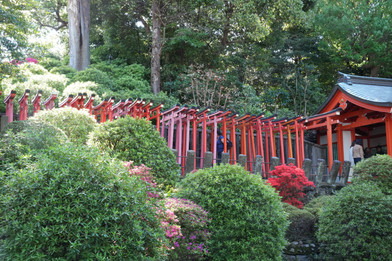















































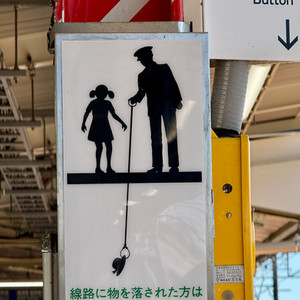















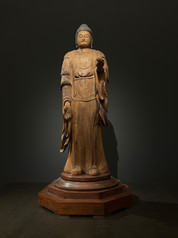



















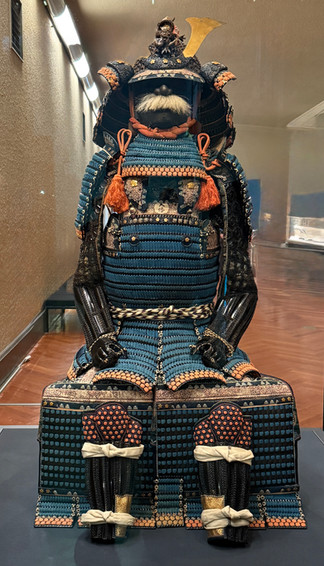

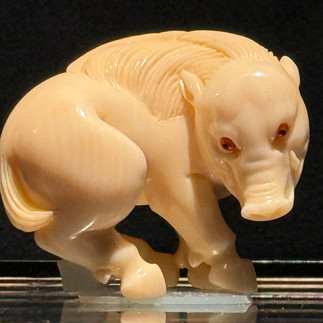



























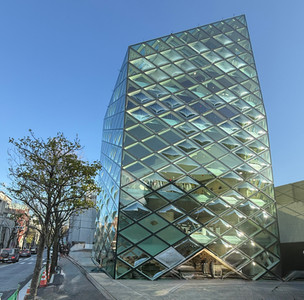












Comments